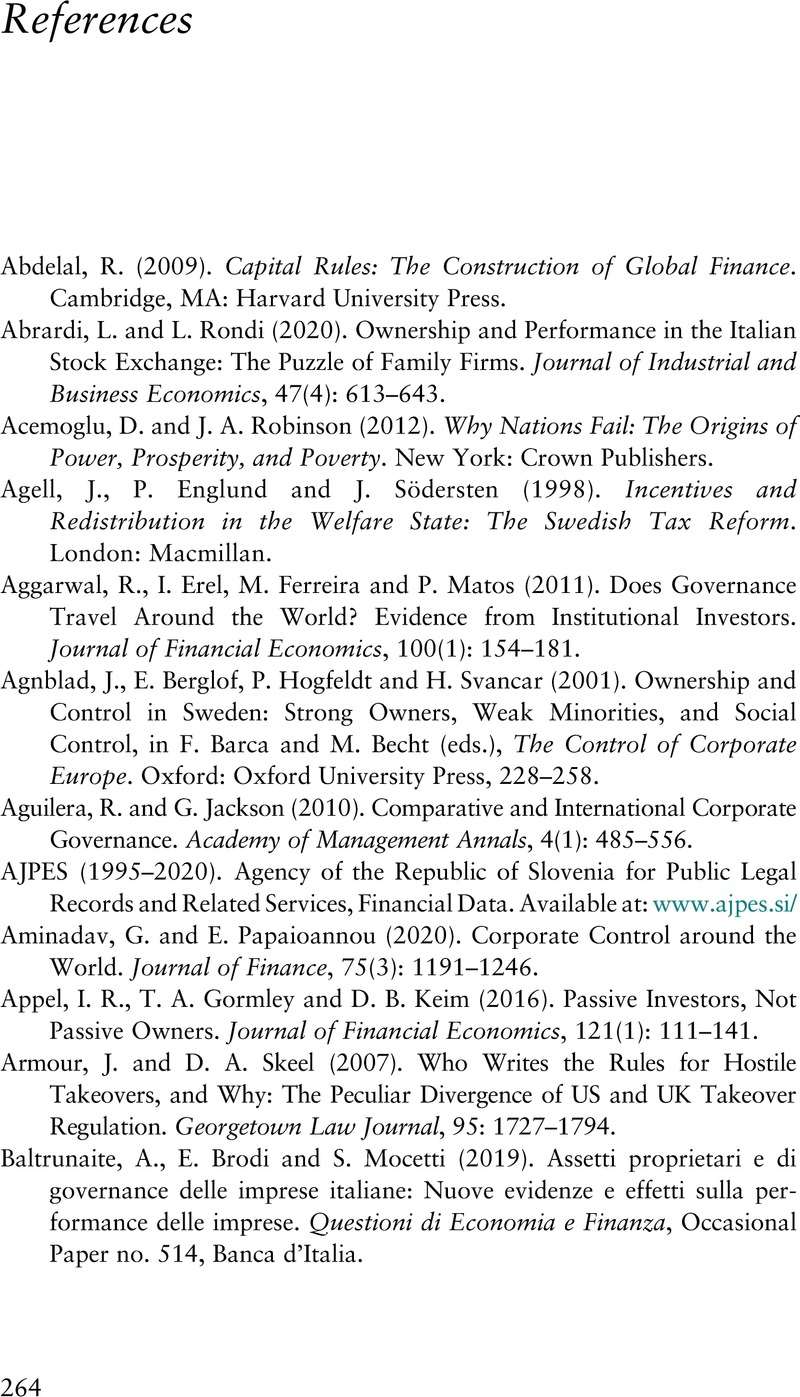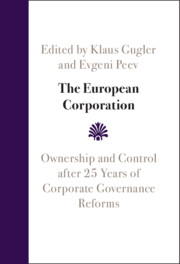Book contents
- The European Corporation
- The European Corporation
- Copyright page
- Contents
- Figures
- Tables
- Contributors
- Preface
- Acknowledgements
- 1 Introduction
- Part I Anglo-Saxon Countries
- Part II Central European Countries
- Part III Scandinavian Countries
- Part IV Mediterranean Countries
- Part V European Transition Countries
- References
- Index
- References
References
Published online by Cambridge University Press: 01 June 2023
- The European Corporation
- The European Corporation
- Copyright page
- Contents
- Figures
- Tables
- Contributors
- Preface
- Acknowledgements
- 1 Introduction
- Part I Anglo-Saxon Countries
- Part II Central European Countries
- Part III Scandinavian Countries
- Part IV Mediterranean Countries
- Part V European Transition Countries
- References
- Index
- References
Summary

- Type
- Chapter
- Information
- The European CorporationOwnership and Control after 25 Years of Corporate Governance Reforms, pp. 264 - 280Publisher: Cambridge University PressPrint publication year: 2023

